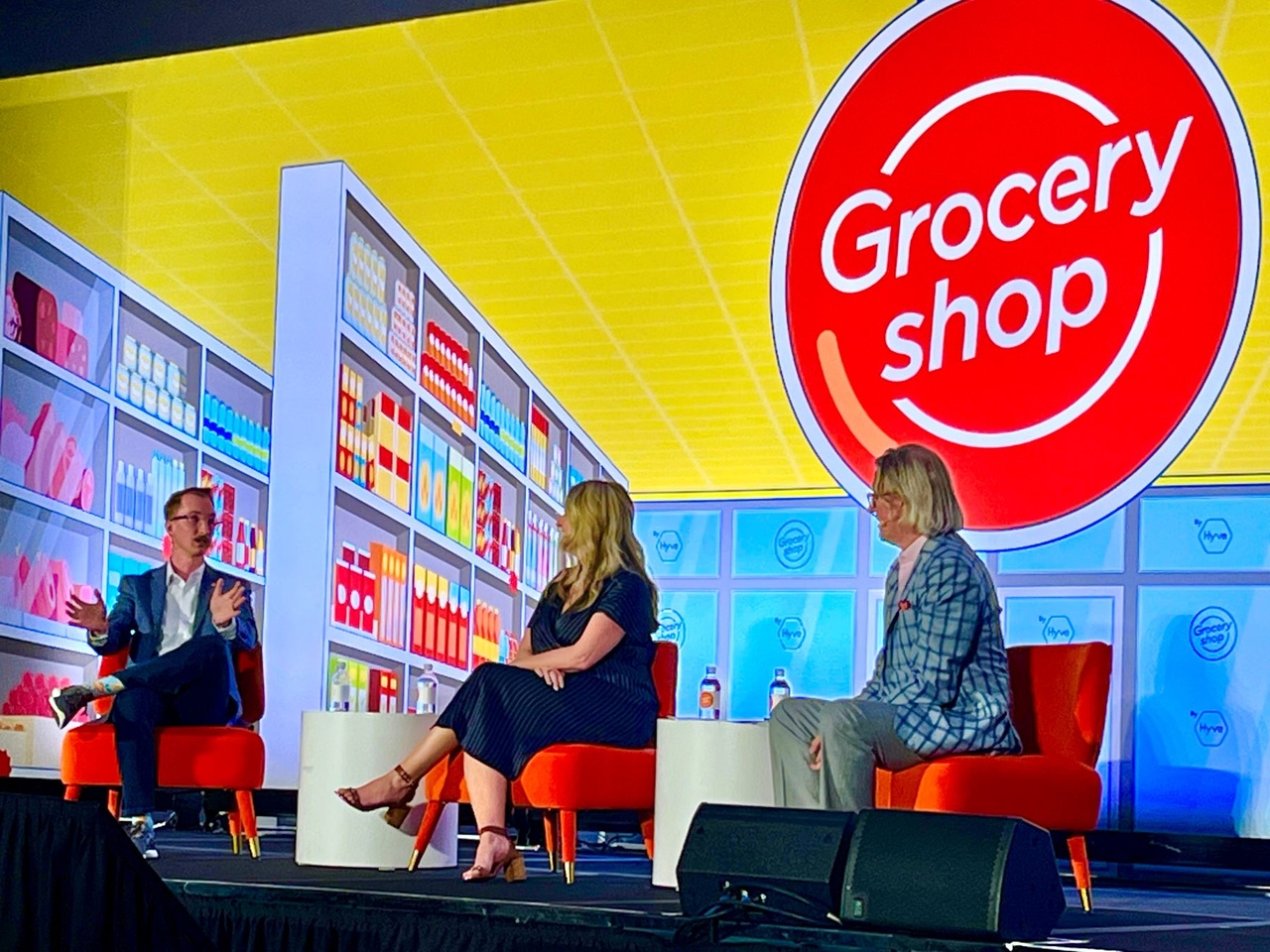SpartanNash: What is e-commerce doing for other channels?SpartanNash: What is e-commerce doing for other channels?
Grocers and retail veterans alike can easily find themselves pivoting to right the ship when e-commerce takes a hit, experts said last week at a panel discussion at the annual Groceryshop conference in Las Vegas.

There are a wide variety of levers grocers can pull when trying to grow their e-commerce businesses, but a rapidly changing economy, shifting consumer confidence and a host of other factors can disrupt the most rock-solid game plan, experts said last week at a panel discussion at the annual Groceryshop conference in Las Vegas.
Grocers and retail veterans alike can easily find themselves pivoting to right the ship when e-commerce takes a hit, according to experts at the session “Achieving Ecommerce Profitability,” featuring guest speakers Matt Van Gilder, head of ecommerce and digital experience at SpartanNash, and Tiffany Hicks, vice president of e-commerce, foodservice and specialty channels at Bumble Bee Foods.
Retail media, micro-fulfillment centers, AI-powered inventory management and deep discounts are just a few of the strategies grocers have pursued to help strengthen their ecommerce sales, according to forum moderator Matt Harmony, partner and managing director for consulting firm AlixPartners.
Van Gilder said he looks at e-commerce more broadly and asks, “What is this e-commerce channel doing for my customer holistically?” He added that it’s rare these days for customers to fit squarely into the e-commerce or in-store box, which begs the question: “How is the activity that we are doing through ecommerce helping drive ROI?”
He said return on investment is only part of the picture, though; grocers must also ask how their digital channels are driving incrementality, whether it’s through more trips or getting shoppers to buy via curbside pickup. “We find that the more customers shop with us online, the more they actually shop with us in-store,” he said.
SpartanNash’s partnerships with various digital marketplaces give the grocer access to hundreds of millions of potential new customers, he said. “So, I think it’s less about how profitable am I in this channel, but how can I leverage this channel to bring customers into our stores and in through our channels more often, more frequently and spending more,” he added.
Hicks said that it can be difficult to determine which retail partner to go with when it comes to buying data. There’s a fear of missing out that if a brand doesn’t buy certain data, their competitors will, and they’ll be at a disadvantage. “It feels like there’s a lot of requests from our retail partners to purchase there data and/or do the digital shelf with them and new item funding,” she said. “I think it’s really tough, from a manufacturer standpoint and omni, to spread your dollars around, because you still want the same brick-and-mortar experience, and yet you’re still trying to do the same thing online, but you can’t combine the two.”
Where to spend on data is so daunting, Bumble Bee has pulled out of buying info from Instacart to test whether the data was even helping, Hicks said. “I’m not sure if Instacart is friend or foe,” she said. “We are actually dark on Instacart for two months, and we’re doing A/B testing, and definitely our sales are going to go down, but how much?”
Van Gilder said grocers need to do a better job of weaving digital and in-store promotions together. “I think that is where there’s a gap, and it becomes increasingly difficult to figure out the attribution on some of these things that you guys are investing in,” he added. “It’s actually a little bit easier to do digitally, because of the search campaign, we add an X amount of items to cart, and those converted to X amount of sales, and here’s your exact ROI on that.”
When grocers and retailers start to weave those campaigns together, “the attribution becomes a little bit fuzzy,” he said.
Making the effort even more difficult, Van Gilder said the teams covering these efforts are constantly shifting. “I think because digital and ecommerce was such a specific and niche thing at first, it was kind of like that team was responsible for doing everything—the merchandising, the planning, the promotions, the technology, the operations, all of it, right?” he said.
He said SpartanNash has experimented with a number of approaches to be more efficient on labor costs. The grocer launched a centralized fulfillment program near the end of COVID, but the numbers didn’t work as volume started to slip after the pandemic.
"You have to have a very high concentration of stores within a market and have a high number of orders go into those stores to support a centralized fulfillment approach, because if you don't have that, it's really hard to offer the customer a full assortment that they would have if we were picking it from the store, especially when we talk about things like fresh and prepared things,” he said.
Read more about:
SpartanNashAbout the Author
You May Also Like






